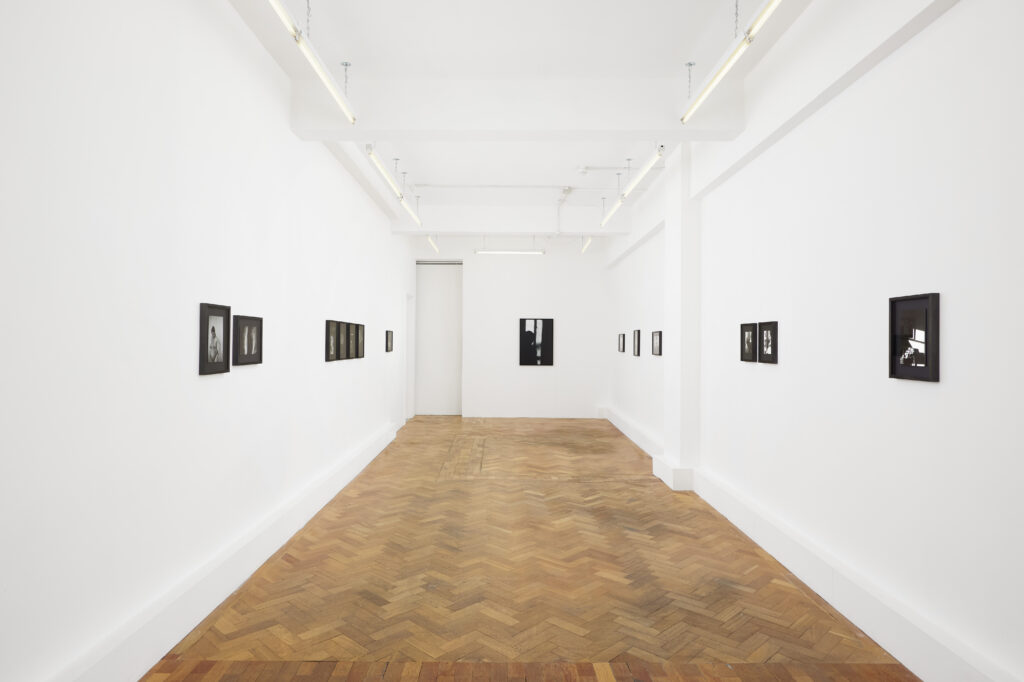
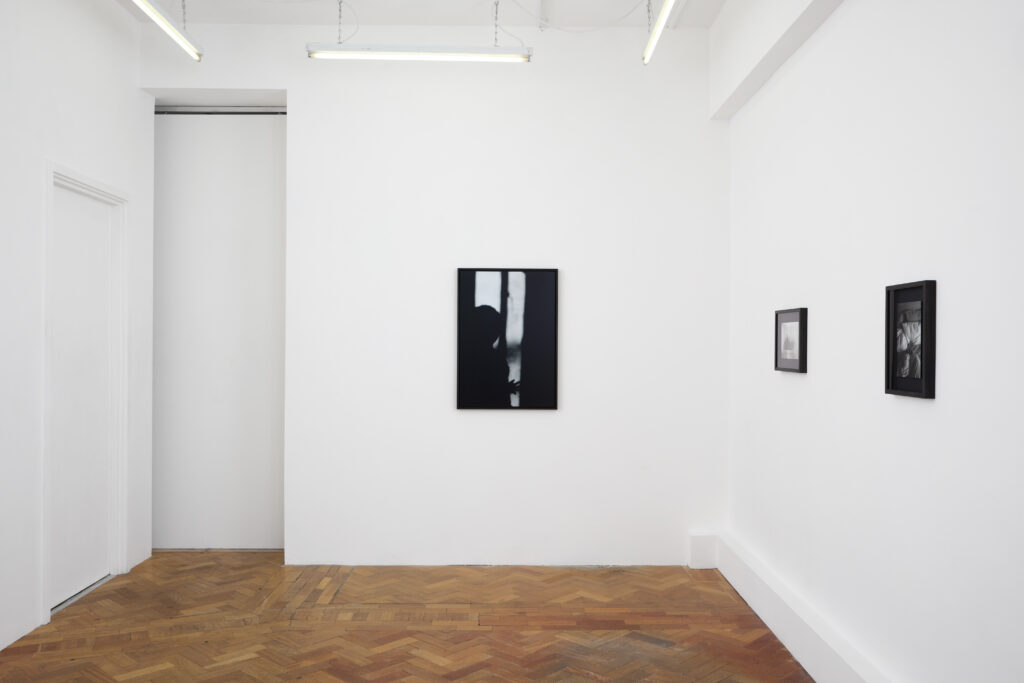
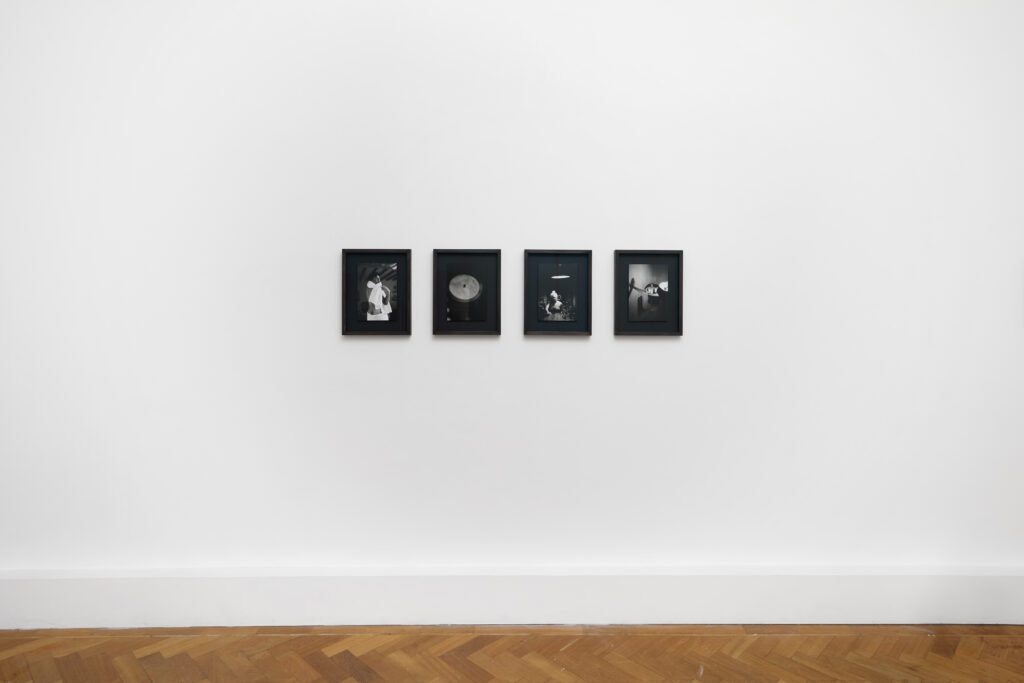
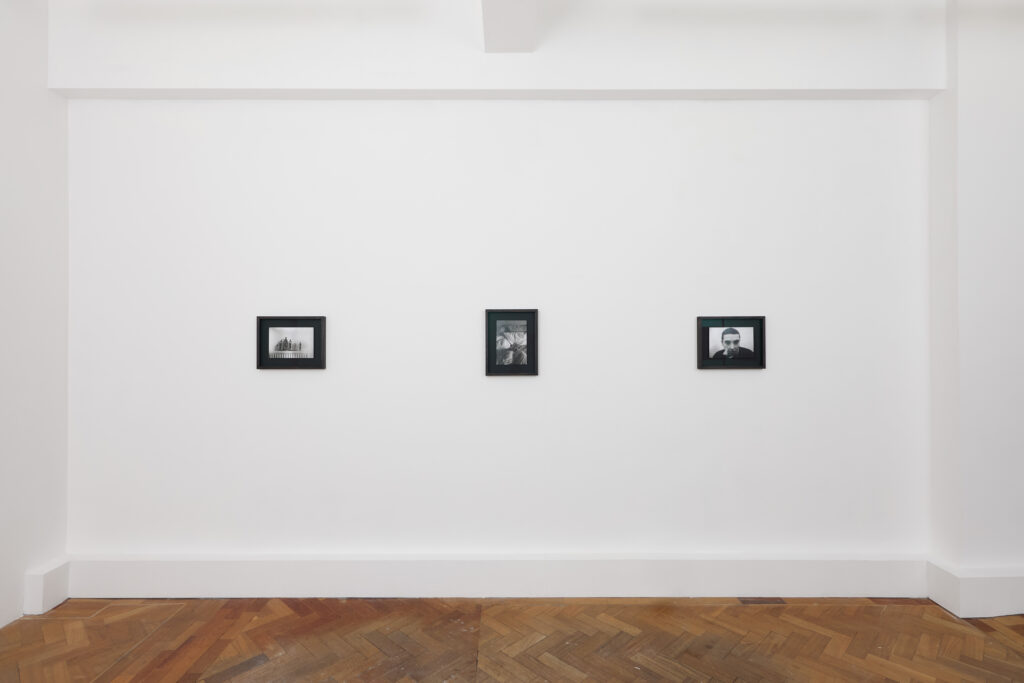
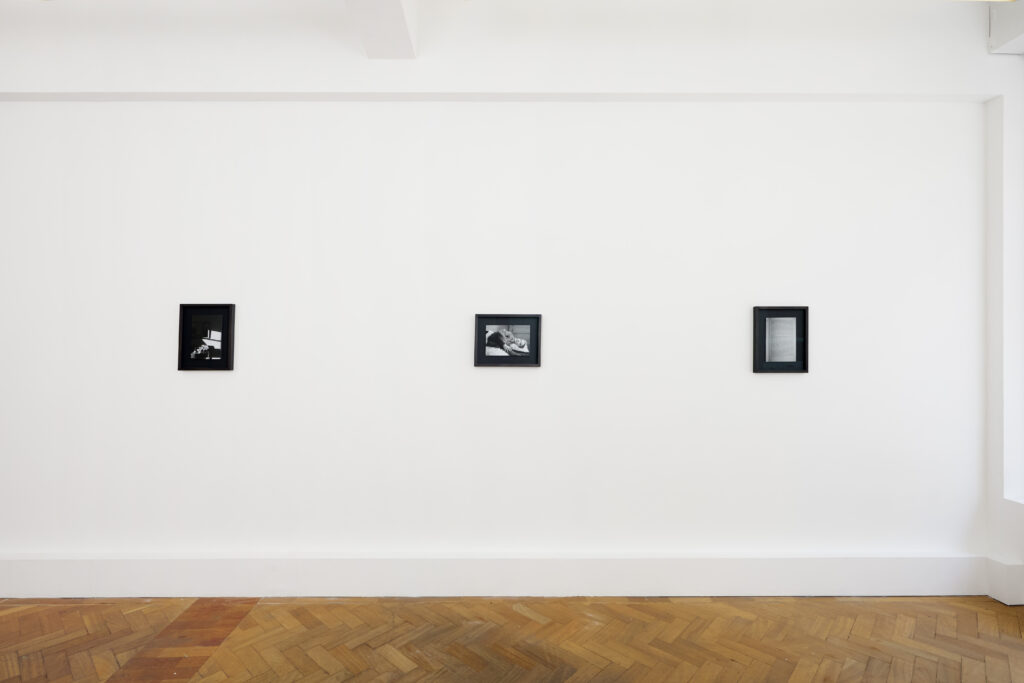
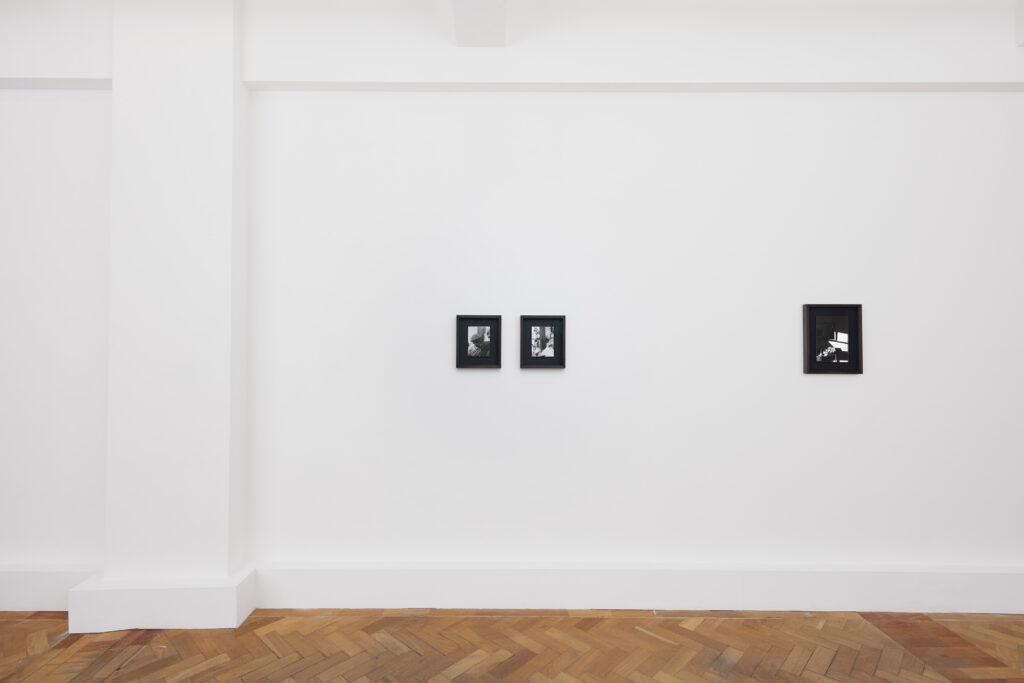
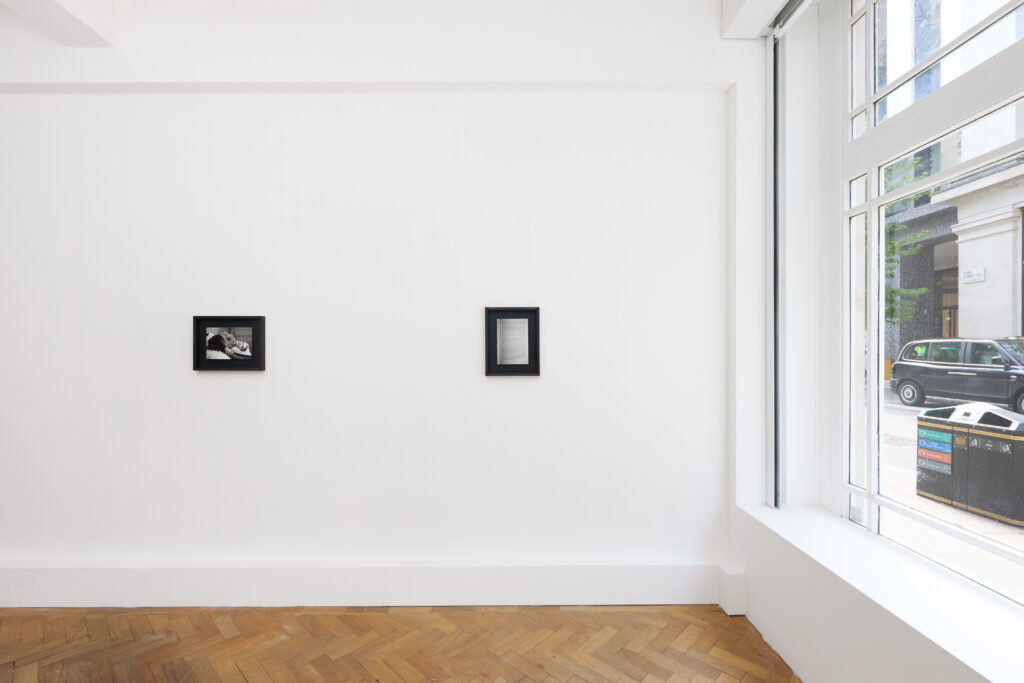


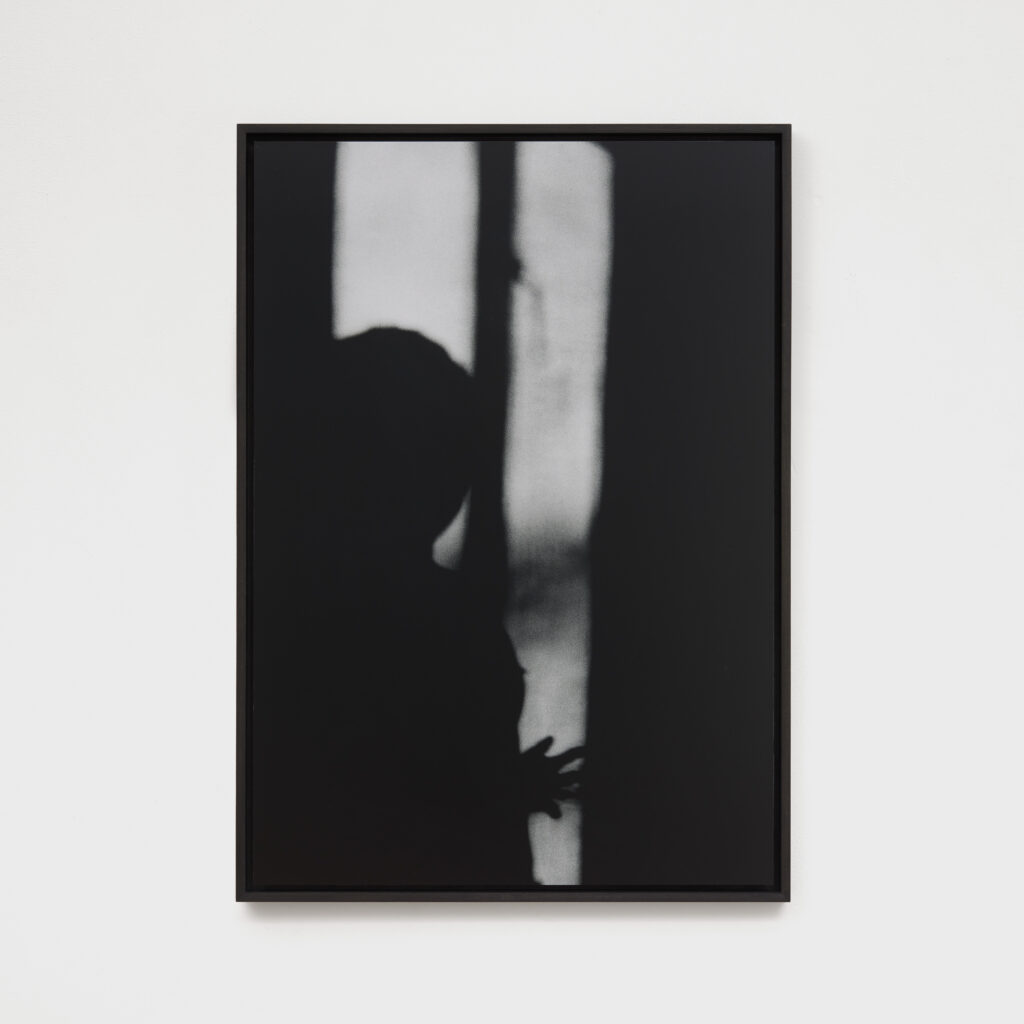
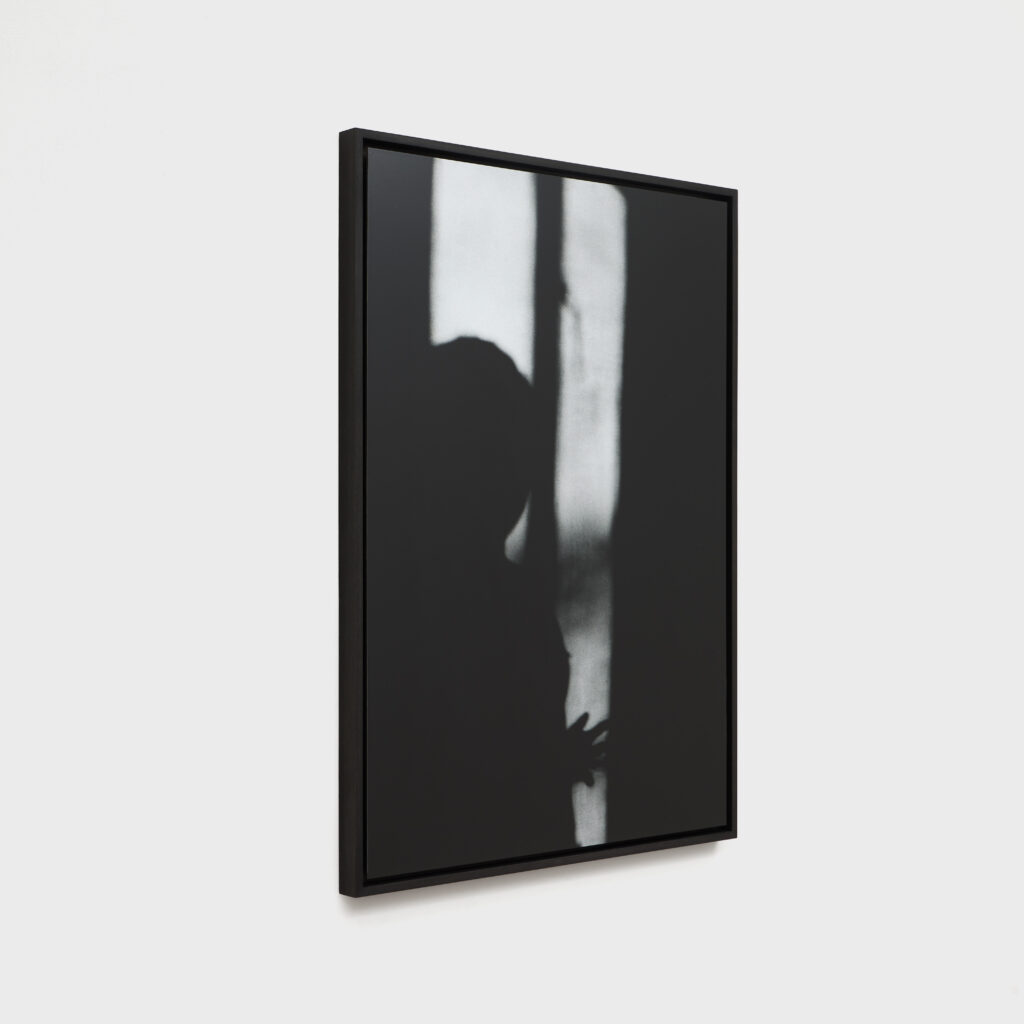

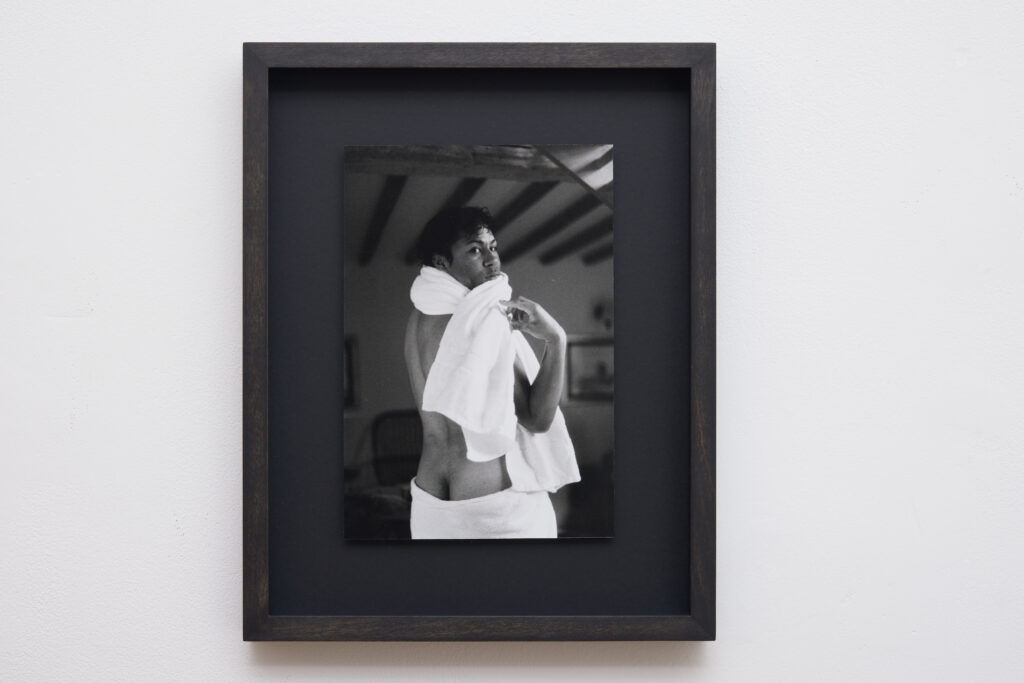
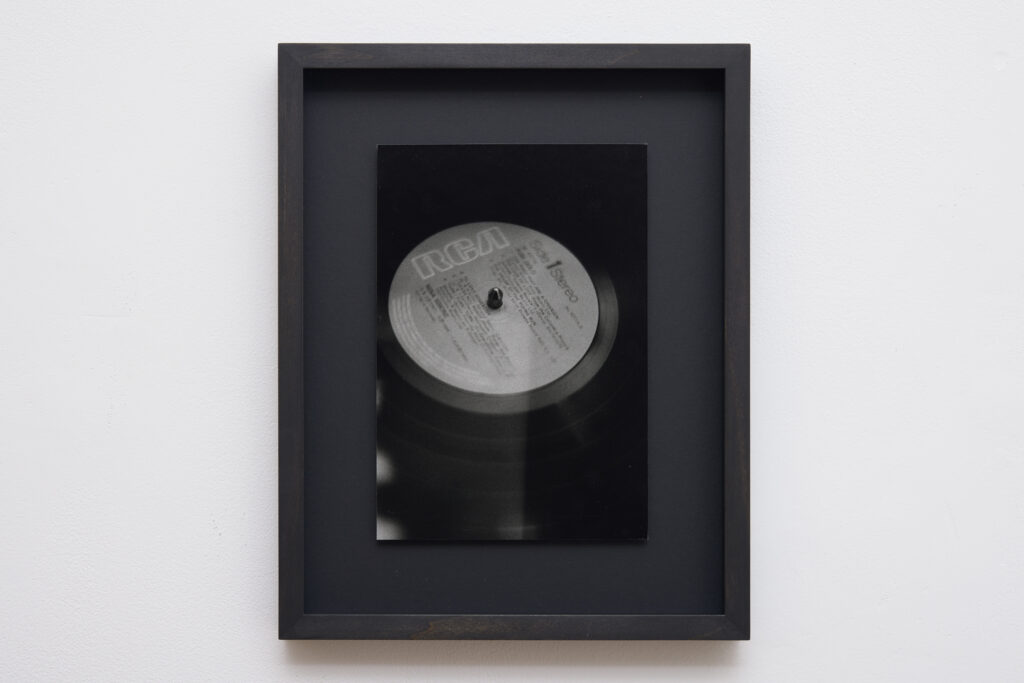
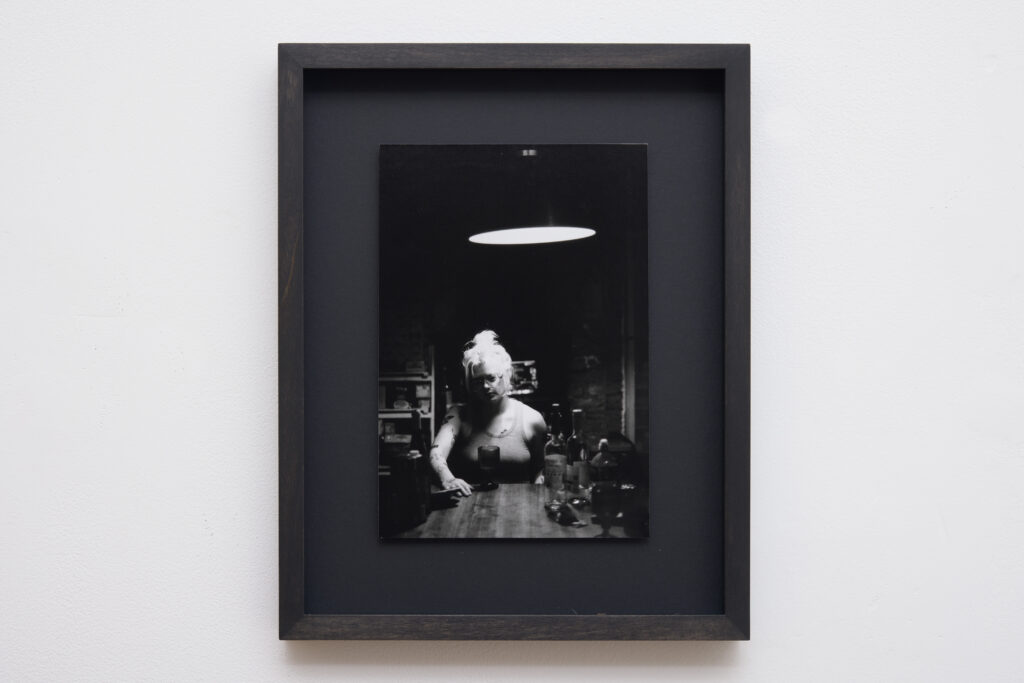
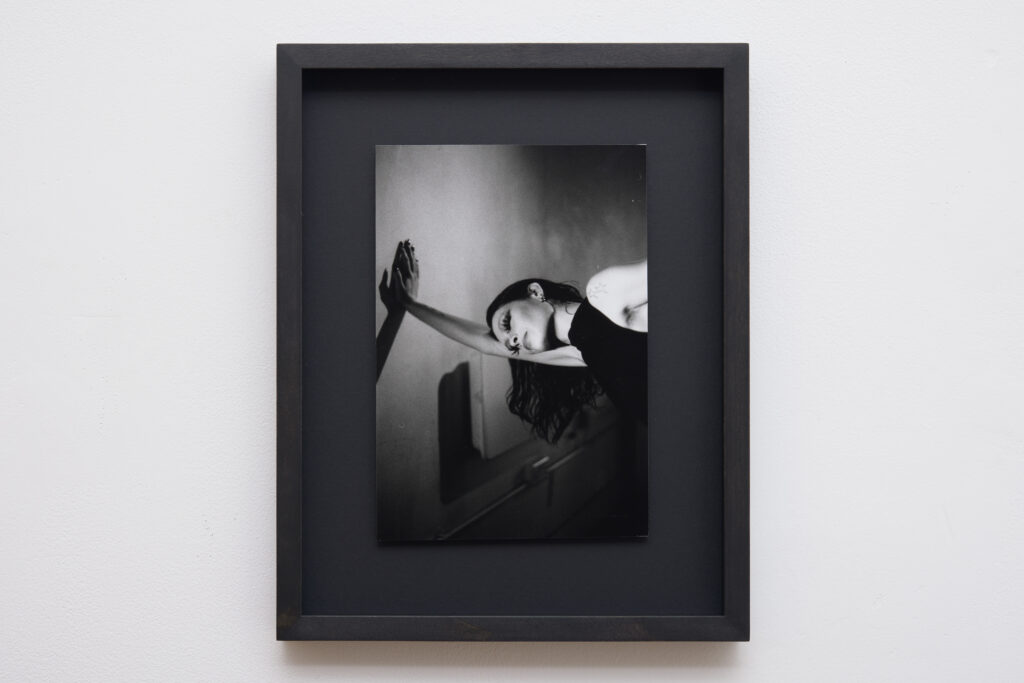
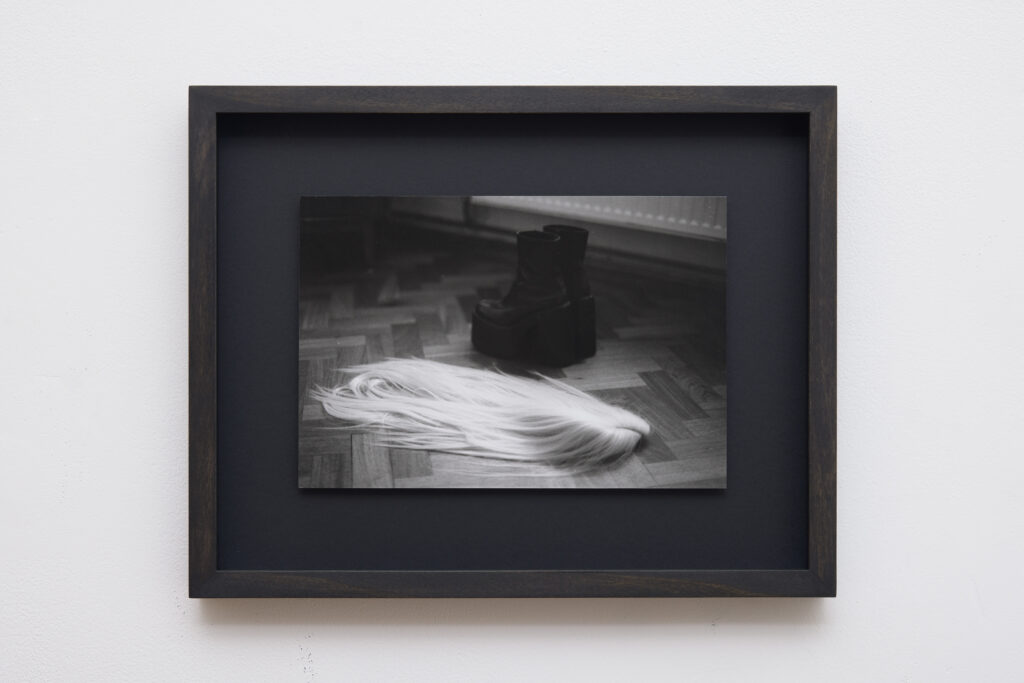
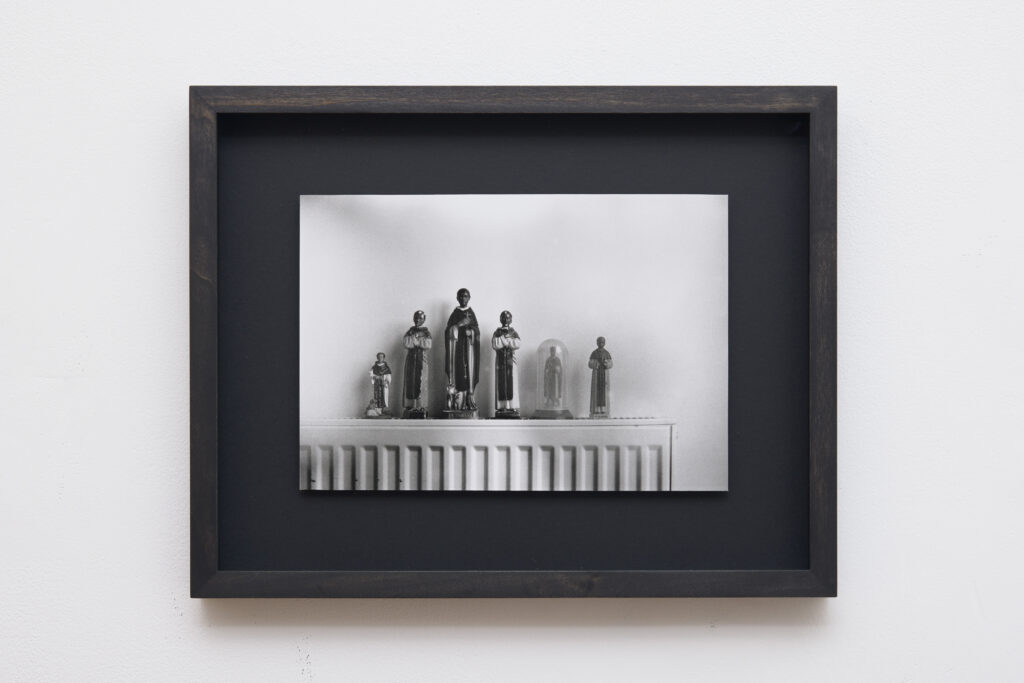
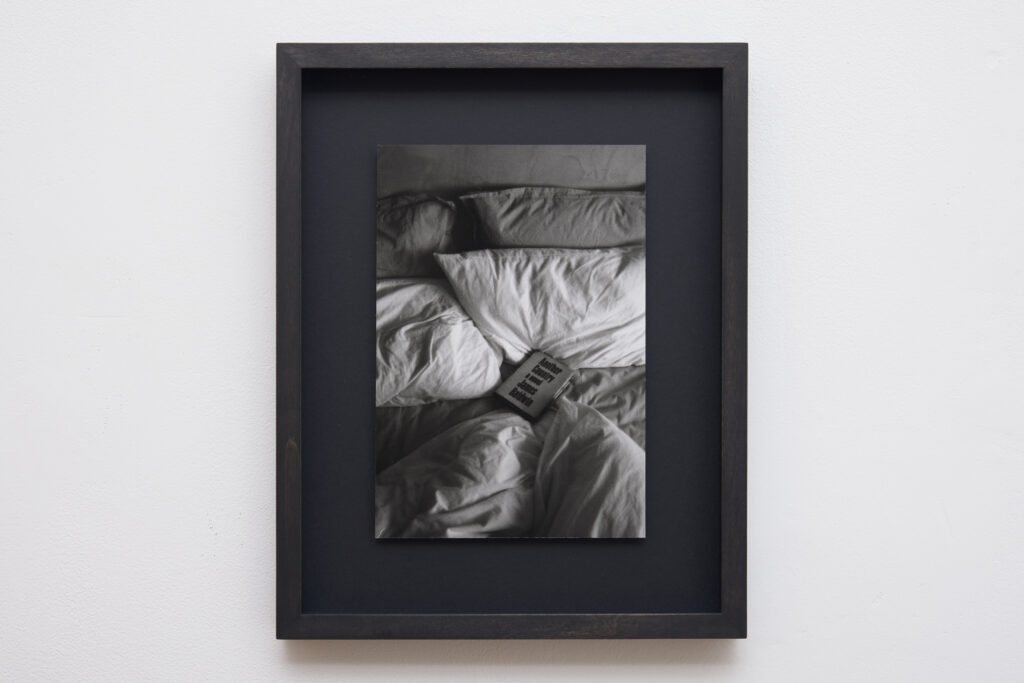
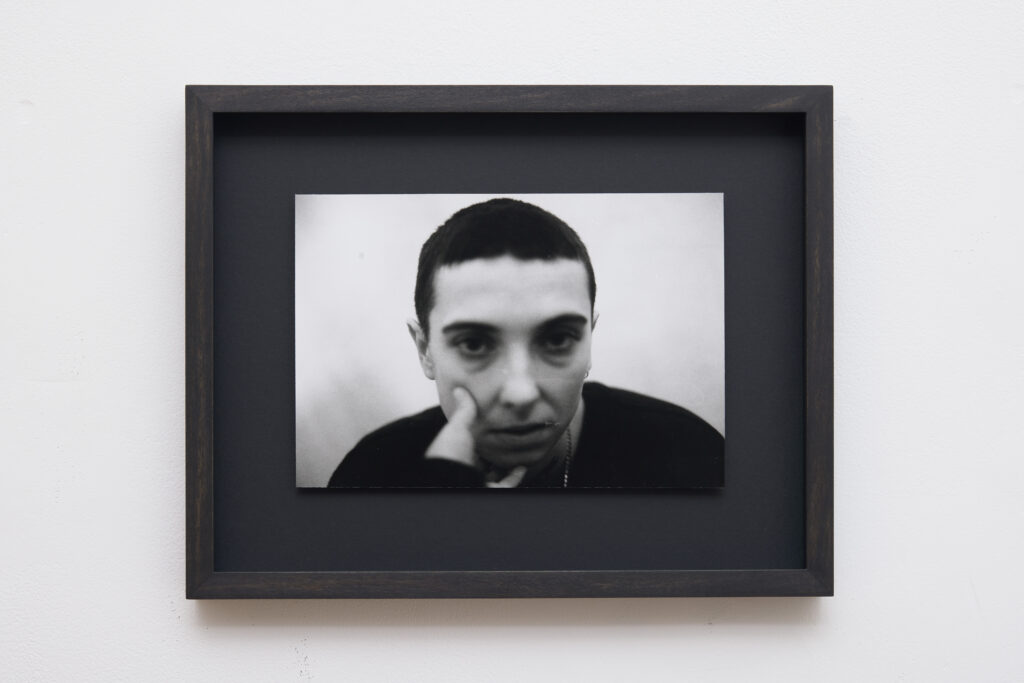
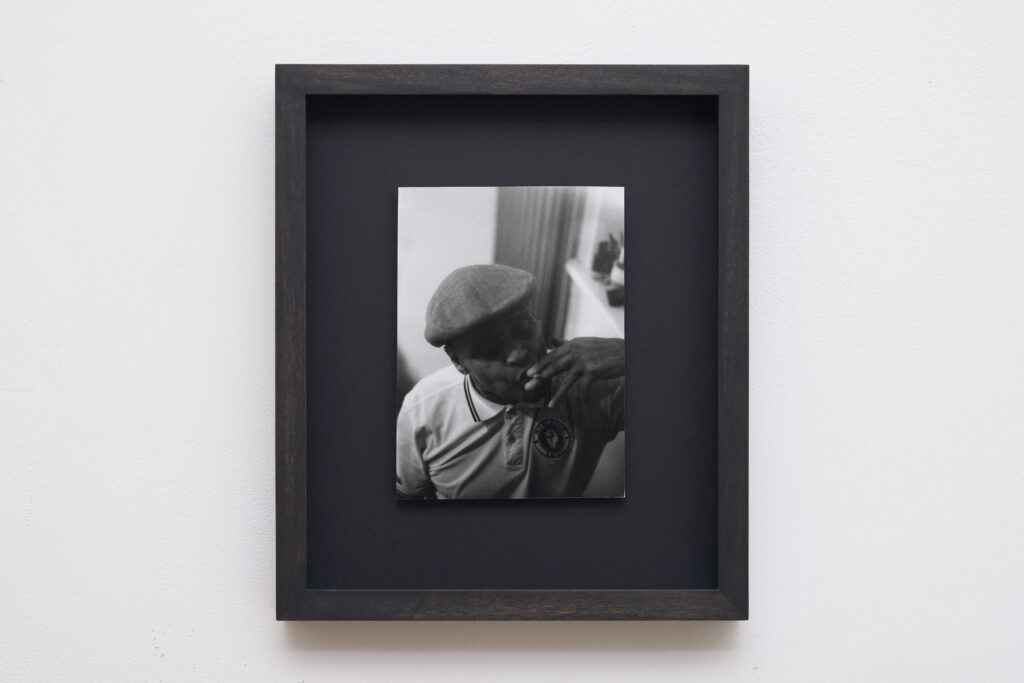
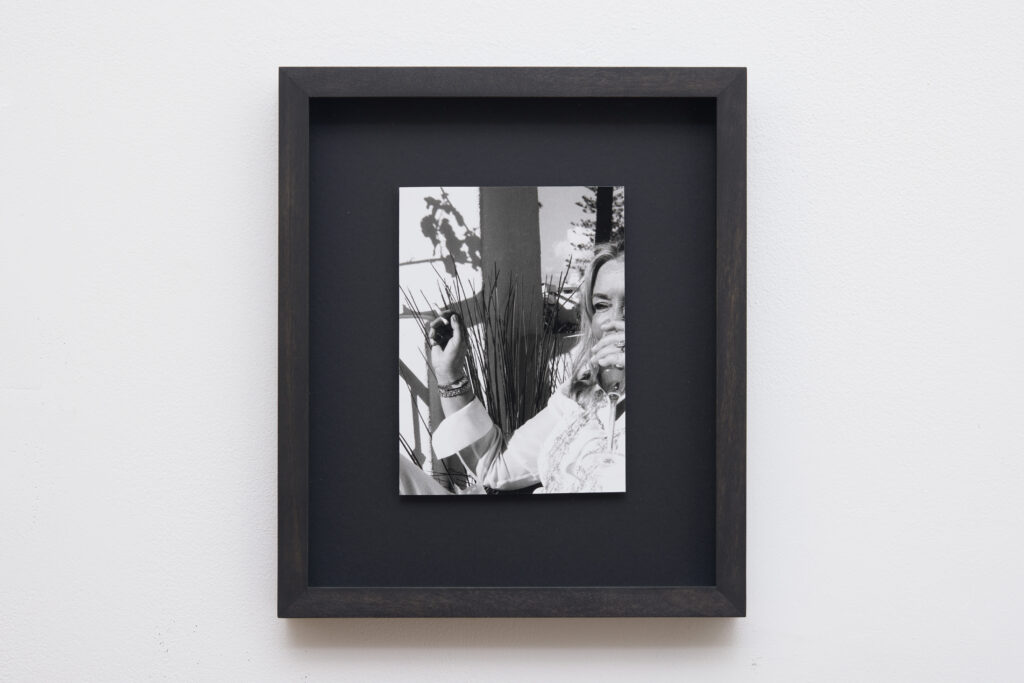
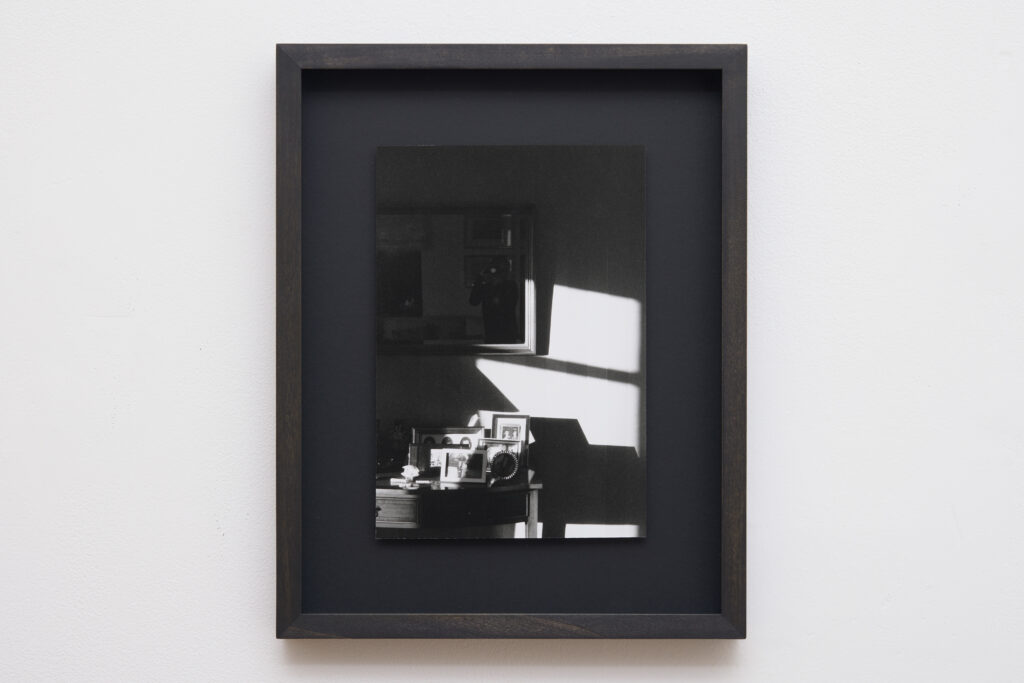
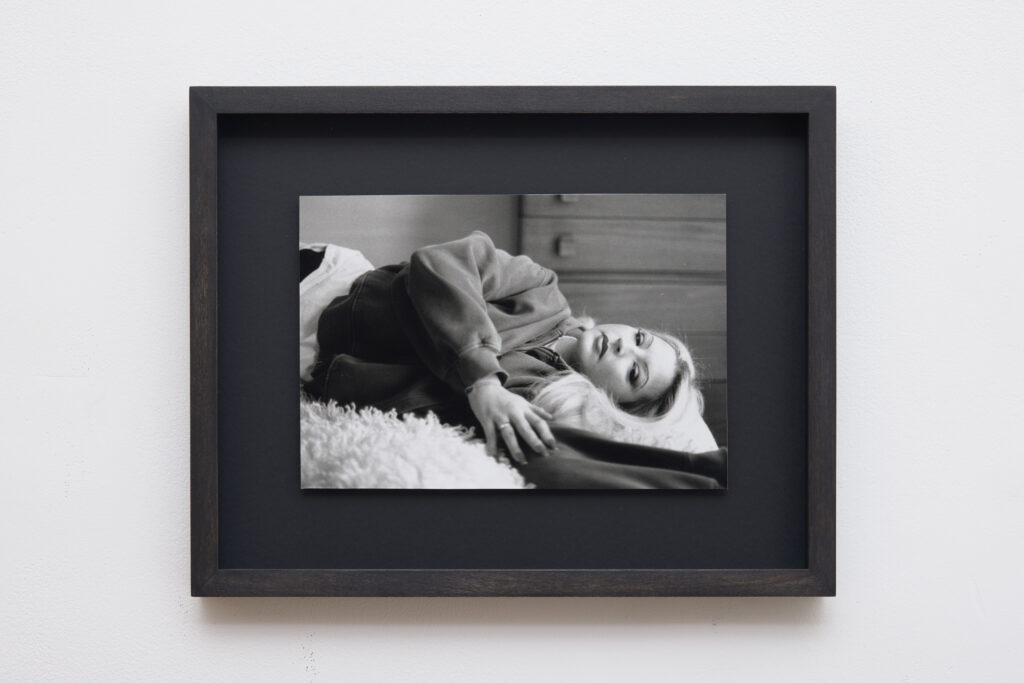
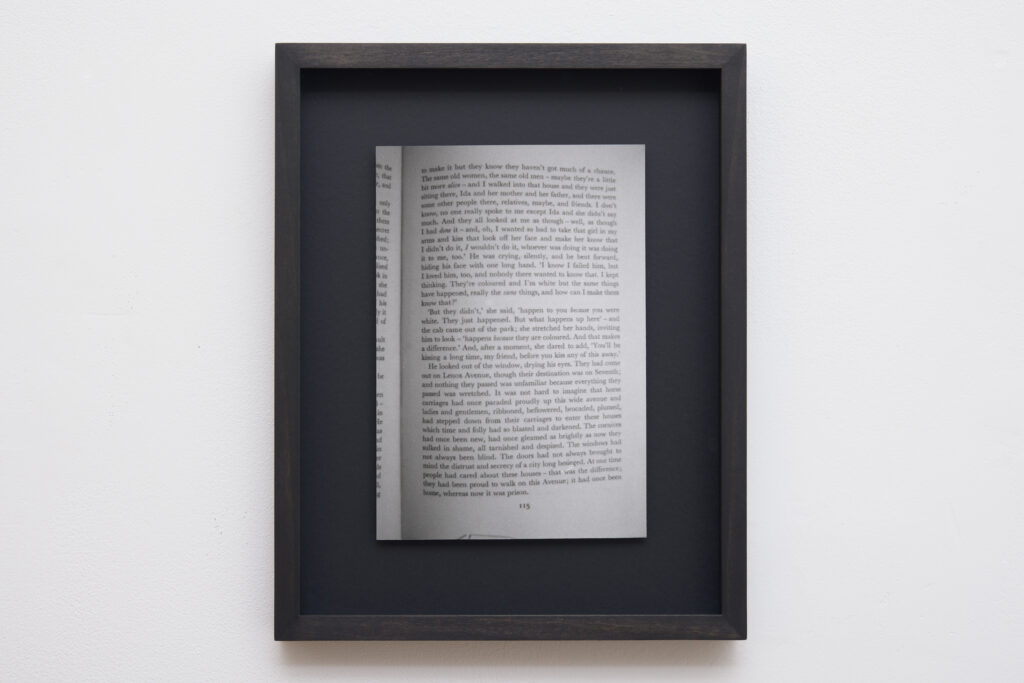
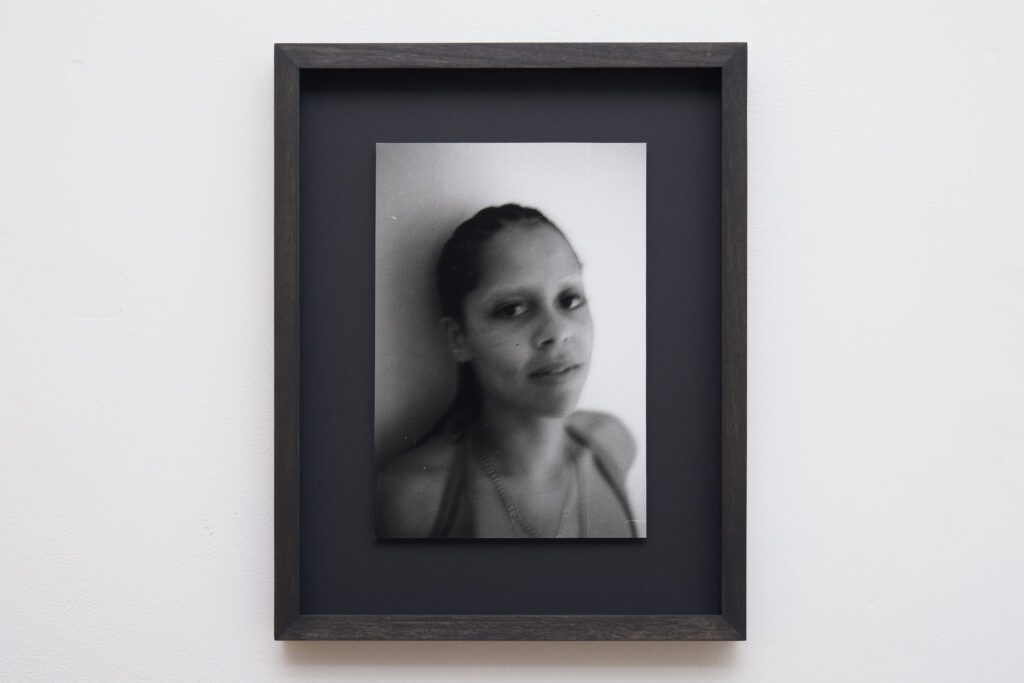
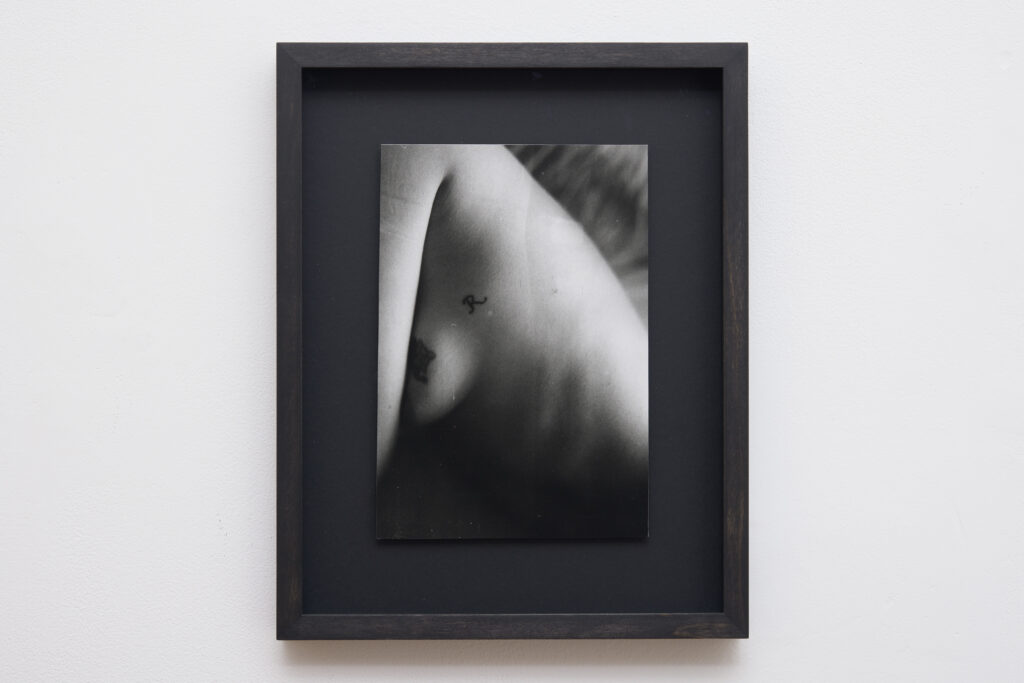
Rene Matić explains to me that each of the subjects photographed in Idols Lovers Mothers Friends have, at one stage or another, been all of those things to them. The lens through which they are seen is Matić’s – a lens of love which is nuanced and complex. By reversing the gaze and turning it onto whiteness, the artist sits in the space of their experienced in-between-ness, feeling out the complexity of growing up with a black father and white mother. With an intimacy typical of the artist’s practice, Matić generously invites the viewer to dwell in their body – to take in these people, some of the artist’s nearest and dearest, through their eyes. Matić offers to share the rush of love that they feel in the presence of these idols, lovers, mothers and friends. At the same time, there is a certain opacity to the way in which they share their gaze – an intimacy that resists full disclosure.
To quote bell hooks, “everywhere we learn that love is important, and yet we are bombarded by its failure….This bleak picture in no way alters the nature of our longing. We still hope that love will prevail. We still believe in love’s promise.” Matić certainly still believes in love’s promise. The decision to love when looking pain in the eye holds immense power and requires strength. In a recent conversation with Dalia Al-Dujaili, Matić explains that they had been searching for love in places they weren’t going to find it and yet, says Matić, “I refuse to give up my quest for love.”
It seems to me that this new body of work represents a moment of meditation for Matić – a meditation on love and choosing to continue to believe in it in order to survive and thrive. Part of our conversation is taken up with reflections on the beautifully complex relationships we have as mixed-race children with white mothers as our primary caregivers. Their proximity to whiteness has held both the promise and pain of love. Matić says, “in the same way that paper contrast, chemical reactions, and even the way certain emulsions respond to light, were all historically designed with whiteness in mind… I feel like I was designed with the same intention. This is the contradiction I live inside: knowing that the love I seek is shaped by a structure that was never meant to hold all of me. That I have been trained into a love that does not fully account for the parts of myself that it cannot recognise. And yet, it is the love I return to – my idols, lovers, mothers and friends – the ones my body seeks without asking. Because it is what I know. Because it is what I was given first.
To be designed with whiteness in mind is to move through the world with an instinct that does not always serve me. It is to reach for something even as I question it. To know that love is not neutral, that history is written into desire. And still—to hold onto the possibility of loving and being loved in a way that is not just default, but deliberate.”
In Idols Lovers Mothers Friends the artist is in every work, every image is a moment with Matić, yet their image often eludes us. We are offered a glimpse of their legs (Rene’s Legs, 2025), the word “SKIN” tattooed on their right shin, “NINA SIMONE” on their left. In Rene at Granny’s, 2025, we can just make out the artist in the mirror, camera covering their face, as they take a shot of a sideboard covered in photos of their white relatives. In Rene’s Wig and Shoes, 2025, we are left looking at white-girlness cast off and disregarded on the floor. And in Rene’s Shadow, London, 2025, the presence and absence of their body is captured as light pours through a window.
Matić’s mother told them that when they were younger they would refer to their shadow as their Baby. Psychologist Carl Jung developed the concept of ‘shadow work’, which involves exploring and integrating aspects of the self, subconsciously considered undesirable or traumatic, that have been repressed in order to achieve greater self- understanding and wholeness. In the same way that Wendy, upon discovering that Peter Pan’s mischievous shadow has become detached from him, sews it back on, symbolically restoring and reintegrating the aspect of him that tied him to a magical world. Matić, even as a child, was nurturing their shadow self. “There’s something about mothering the self there. But mostly mothering the black part of myself. In my shadow I understand and see myself as a black body for the first time. A shadow is a proof of presence.”
For Idols Lovers Mothers Friends, Matić has spent time navigating a world relatively new to them – the darkroom and this body of work also becomes a meditation on photography. The sometimes unpredictable, almost alchemical processes of the darkroom (technologies designed with whiteness in mind) have given them the chance to slow down and to bring images in black, white and different shades of grey into the world in a way which involves both a level of control and surrendering simultaneously. They describe nurturing these images – submerging a piece of paper, which might hold elements of love, desire, laughter or hurt, into the water and drinking in the moments when the composition emerges on the paper – sometimes a little too quickly or too slowly, or sometimes just right. They also talk about the dance the image does in moments when multiples of a loved one’s face moves around the water bath and the feelings that experience elicits. There is so much in photography which can feel confronting – from the flash of the bulb to the language around it (we take a photograph, shoot a shot, capture a headshot) – but there is nothing violent in this body of work. The body here is tender – like a kiss between a parent and child, a kiss between lovers, or a kiss of friendship. I’ll end with a quote from James Baldwin’s Another Country, depicted by Matić in the exhibition, which is melancholic at the same time as being hopeful, ‘you’ll be kissing a long time, my friend, before you kiss any of this away.’
– Aïcha Mehrez, April 2025
Rene Matić (b. 1997, Peterborough, UK) is a London-based artist and writer whose practice spans across photography, film, and sculpture, converging in a meeting place they describe as “rude(ness)” – an evidencing and honouring of the in-between.